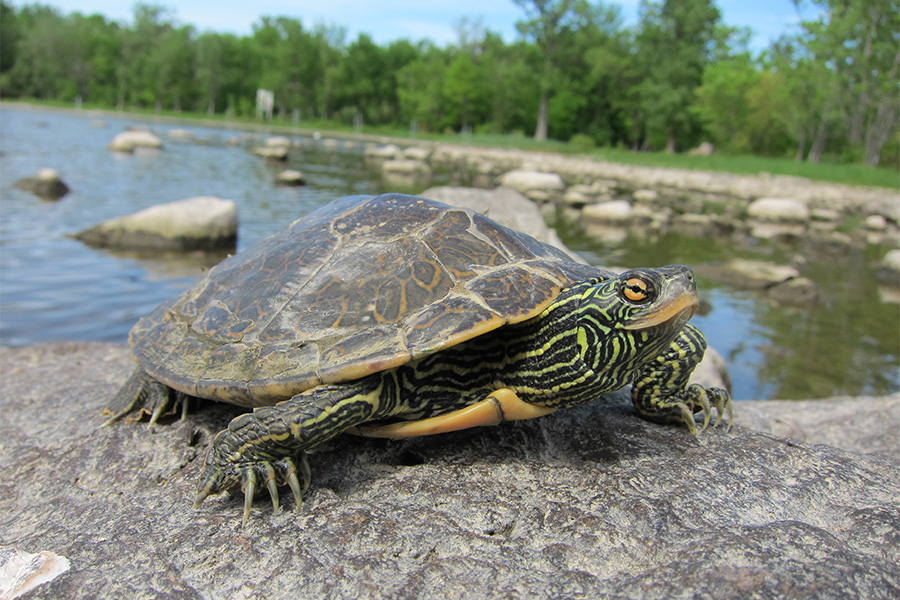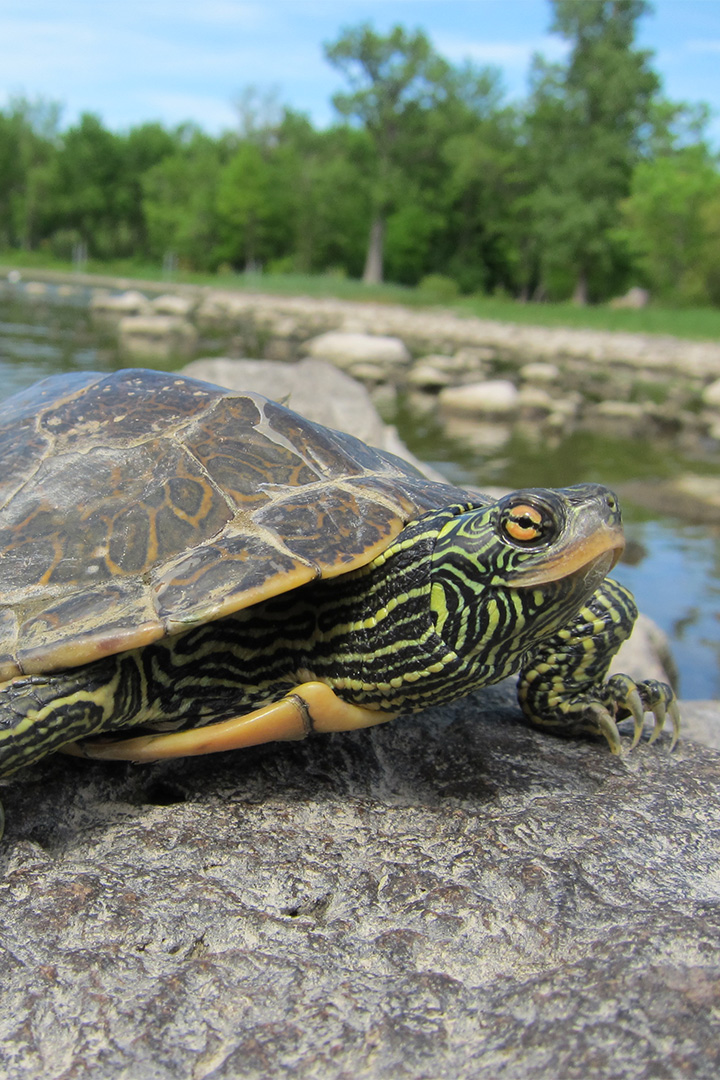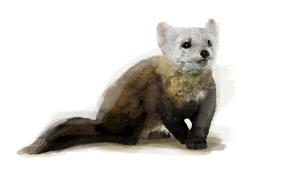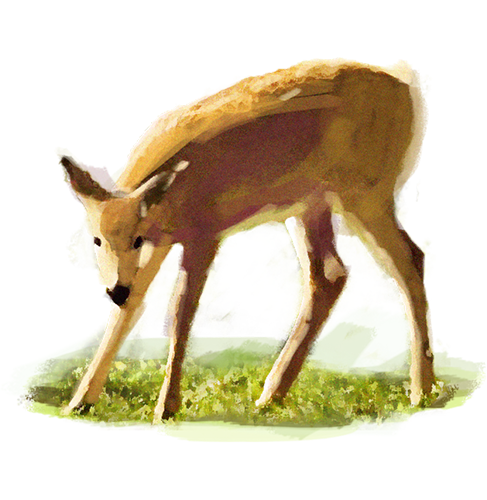

Although the Northern Map Turtle can be found in a few other places in Québec, the Lac des Deux-Montagnes population has the distinction of being one of only two remaining large populations to this day. The other population of importance is in the Outaouais region. Unfortunately, the population found in the Lac des Deux-Montagnes faces unfortunate inconveniences resulting from the location of its habitat, directly west of the island of Montréal, where the level of human activity is very high. It goes without saying that the threats to the survival of the species are great in a sector so used by humans as the Lac des Deux-Montagnes.
In order to identify and ultimately reduce or eliminate threats to the Northern Map Turtle’s survival, our biologists captured and released several hundred turtles to examine their health status. The operation also allowed us to estimate the size of the population. This estimate will then be used as a basis for monitoring population trends over time and will help determine whether the population is growing or declining.
Over the two year period, 52 male and female turtles were equipped with transmitters, all of which had a unique frequency to identify and locate each individual. The monitoring of these turtles from May to November helped identify the important habitats that are used by the species, including the sites they frequent for sun exposure, for nesting and for hibernation. These geographic areas are of crucial importance for species’ survival. Telemetry tracking allowed us to acquire considerable knowledge about the species’ biology and movements.
Unfortunately, many of the turtles caught for examination and subsequent release had injuries most probably caused by boat propellers. These human activities continue to pose significant problems, as clearly evidenced when in 2009 one of the turtles tagged in the program was found with an amputated front leg and substantial damage to its shell after a collision with an engine propeller.
Nesting sites, which are small and often located on private properties, are frequently decimated by raccoons and skunks that have become overabundant in the region as a result of human activity that is favorable to them. Thus citizens, well-intentioned as they may be in feeding the small mammals of the region, strongly affect the survival of the Northern Map Turtle species. As a result of this study, the most important habitats to be conserved for the safeguard of the Northern Map Turtle population in Lac des Deux-Montagnes have been identified. The protection of this species in peri-urban areas is a major challenge that we expect to meet thanks to the support and collaboration of our valued partners. In the pursuit of these conservation efforts the Ecomuseum Zoo worked with the Nature Conservancy of Canada (NCC) to develop the "Conservation Plan for the Map Turtle Population of the Montréal Archipelago" whose objective is to identify the protection measures and land management requirements for the crucial habitats used by the species, as well as to formulate recommendations to mitigate the impact of threats to the population.
The Ecomuseum Zoo’s team also busied itself developing basking sites in the fall of 2015, as well as a nesting site in the winter of 2016 to provide turtles with areas that were both adequate and favorable to the species. Through to 2020 the Ecomuseum Zoo will monitor the sites created to see if they are used by turtles, contributing to the recovery of the species population in Lac des Deux-Montagnes.

